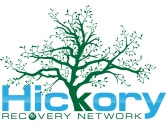If you or someone you know has ever dealt with a substance abuse addiction, you know that chaos and the unexpected are typical during the throes of an addiction. Luckily, with recovery comes a lot of routine and structure.
However, the journey through addiction and recovery is relatively predictable, thanks to the Jellinek Curve. The Jellinek Curve outlines what stages most people can expect to go through as they enter addiction and eventually take the road to sobriety.
The History of the Jellinkek Curve
The Jellinek Curve is a scientific predictor of addiction created by biostatistician and physiologist E. Morton Jellinkek. Since its creation, the Jellinek Curve has been adapted several times over, including notably by Max Glatt. Still, E. Morton Jellinkek is often credited with being the first to begin research into addiction science.
Jellinkek created the Jellinkek Curve model to identify the progressive stages of alcoholism (although the curve typically works for any substance abuse addiction).
After sending out a questionnaire to 1,600 subscribers of the Alcoholics Anonymous Grapevine magazine, Jellinek focused on 98 responses and became convinced that alcoholism had a progression pattern that occurred to most people with the condition. In 1950 he made his first initial sketch of what he thought the progression looked like, which was the beginning of the Jellinkek Curve model. Additional research on a much larger sample allowed Jellinkek to get a clearer picture of each stage.
Jellinkek’s research was revolutionary because it shifted the perception of addiction. The Jellinkek Curve helped to show that addiction was a journey and a condition, not just a person being “weak and immoral.”
A few years after Jellinkek identified and published the curve, an important (and permanent) addition was made. Doctor and founder of the Alcoholism Treatment Unit at Warlingham Park, Max M. Glatt, found that his patients experienced an upswing in recovery and adjusted the chart to include this stage.
What is the Jellinkek Curve?
The Jellinkek Curve shows the typical path people go through with addiction and recovery. The curve can be split into three stages:
The Crucial Stage
This first stage is when addiction appears and takes over. A person gradually (or quickly) transitions from occasional, social drinking to binge drinking and daily drinking. At the crucial stage, the individual cannot stop their drinking frequency or amount, which brings them to the lowest part of the curve.
The Chronic Stage
At the bottom of the Jellinek Curve is a loop. When a person is in this part of the curve, they spiral into addiction. They become trapped in cyclical patterns of overdrinking, trying to stop, and starting back up again. At this stage, external help from friends and family, such as interventions and encouragement to go to rehab, are vital.
The Rehabilitation Stage
The rehabilitation stage starts with the person struggling with addiction finally being genuinely open to accepting help. They want to overcome their addiction and get better. From this moment, things go up and up as they progress in their recovery. Rehabilitation isn’t easy, and it takes time, but once a person is committed, there’s a good chance they’ll make it to sobriety.
Why the Jellinek Curve Matters
Addiction can feel very isolating, but the Jellinek Curve offers a different perspective. It shows that substance abuse addiction is a disease that has a pattern. Most importantly, it shows that loved ones can help by intervening, and there’s hope once a person makes it to the Rehabilitation Stage.
Hickory Recovery
If you or someone you know is ready to address their addiction and welcome sobriety, Hickory Recovery can help. Our approach is comprehensive and compassionate. Contact us today to find out if our substance abuse treatment program is right for you.


